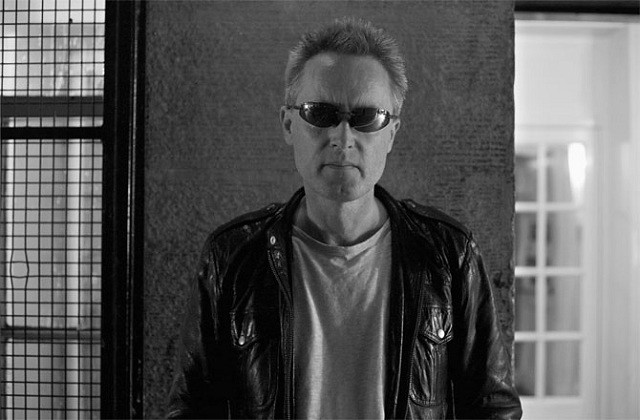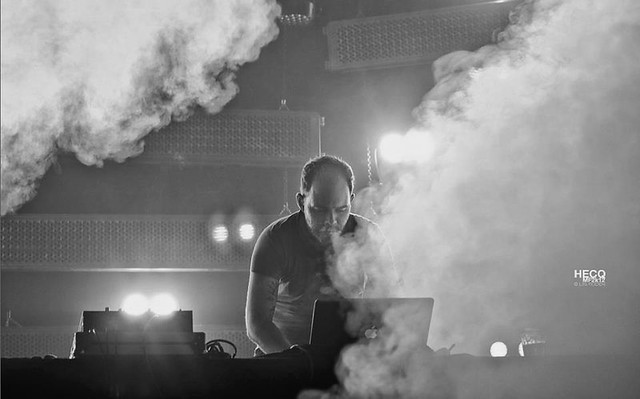Live at Cafe Oto // Cut Hands & Dalhous

Listening to William Bennett’s two albums as Cut Hands is as visceral and consuming an experience as his explorations into harsh noise as Whitehouse, and transferring those qualities to a live performance has presented Bennett with a unique challenge, given the instrumentation used on record. Bennett sourced African percussive instruments, mostly Ghanaian, for the recordings; and so given that he performs the material solo, inevitably there’s going to be a lot of button pushing and sample triggering. Despite that challenge, the prospect of a Cut Hands performance had still been enough to convince me to shell out for a ticket. I hadn’t considered who the support might be, in fact I’m not even sure I clocked that the concert was being put on by excellent London promoters BleeD, so the discovery a week or so prior to it that Blackest Ever Black signees Dalhous would be opening was a cause for excitement. I came across Dalhous a few weeks before that discovery, unaware I had a ticket to see them and even unaware that they were the same outfit as Young Hunting, whose 2010 album Attachment in a Child and the Subsequent Condition, with its rich instrumental textures, had caught my attention at the time.
Regardless of those foregoing admissions of blitheness, I went in with certain reasonable expectations about the performances and they were either met or joyfully confounded. Men standing behind laptops can be a little uninspiring performance-wise, so Dalhous’ set-up of analogue hardware was welcome (still not exactly like watching Hanatarash, granted) and provided an interesting visual diversion when not absorbed in the film footage projected next to the duo. The footage included images of mid to late 20th century Britain; and so coupled with the unsettling drones and beats emanating from the foregoing hardware, it recalled Mordant Music’s Misinformation – a film constructed from public information videos and accompanied by a specially composed soundtrack. As with that film, the music was well matched with the images, despite its anachronistic quality. Dialogue from the footage was left in, and combined with the noisy (maddeningly so) chatter of the audience it created some sinister moments, as screams of horror from the films became engulfed in the crowd noise and sounded as if they were coming from within the room. The Edinburgh-based duo make dense, morose, beat driven music, traversing a variety of tempos and often sounding awfully similar to another Blackest Ever Black duo, Raime. On record Dalhous have an airer feel that Raime, as well as incorporating a greater diversity of sounds; but the comparison is hard to avoid and the increased decibels of the performance made the music sound more unsettling and darker, and thus closer to that of the London pair’s. Interestingly, there were moments which reminded me of parts of the more ambient moments from the most recent Cut Hands LP, Black Mamba, which recall the psychedelic atmospheres of Popol Vuh, but with drones and percussion that have a darker feel than the German band, and so sit well with both artists’ association with Blackest Ever Black.
Despite the frenzied quality of his music, William Bennett’s performance was constrained by the aforementioned hindrance of being performed in part on a laptop, and ultimately he is fighting a losing battle trying to transfer the energy and mood of the recordings to live settings. An East London café isn’t exactly the terrain that the music brings to mind, but that isn’t to suggest the performance wasn’t engaging, intense, and vivacious. As with Dalhous, the music was accompanied by visuals, with a medley of imagery ranging from skulls and primitive drawings, computer imagery, and the cosmic. Such diverse reference points run the risk of creating a meaningless slew of signifiers, but as with the music, which combines influences and elements from wildly divergent sources, the result was a collection of foraged signs which called into question the cultural identity of the music. Bennett’s Cut Hands projects refuses to be tied to any location or style; and combines influences and elements from wildly divergent sources – ritualistic percussion, electronic grooves, and power electronics, to names a few. Even at its harshest moments which draw from that aforementioned influence of power electronics, the Cut Hands material never comes close to extreme frequencies or volume of Whitehouse, although occasionally members of the audience were forced to cover their ears, apparently in pain. The physicality of the music still seeped through, with the occasional flailing body part in the audience despite the serene surroundings - a reminder that this is Bennett’s take on body music. The static reactions of much of the crowd indicated that it’s not interpreted that way by all, as it presents a break from conventional Western electronic dance music, but it’s in no way any less compelling.
- Published
- Apr 2, 2013
- Credits
- Words by Rob Heath
